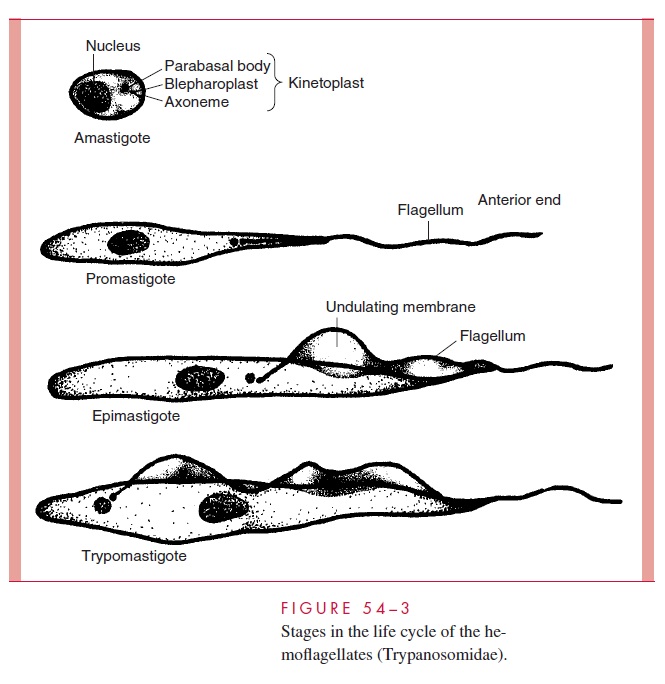Chapter: Medical Microbiology: An Introduction to Infectious Diseases: Flagellates
Blood and Tissue Flagellates
BLOOD AND TISSUE FLAGELLATES
Two of the many genera of hemoflagellates are pathogenic to humans, Leishmania and Trypanosoma. They reside and reproduce within the gut of specific insect hosts. Whenthese vectors feed on a susceptible mammal, the parasite penetrates the feeding site, invades the blood and/or tissue of the new host, and multiplies to produce disease. The life cycle is completed when a second insect ingests the infected mammalian blood or tissue fluid.

During the course of their passage through insect and vertebrate hosts, flagel-lates undergo developmental change. Within the gut of the insect (and in culture media), the organism assumes the promastigote (Leishmania) or epimastigote (Trypanosoma) form (Fig 54 – 3). These protozoa are motile, fusiform, and have a blunt posterior end and a pointed anterior from which a single flagellum projects. They measure 15 to 30μm in length and 1.5 to 4.0μm in width. In the promastigote, the kinetoplast is located in the anterior extremity and the flagellum exits from the cell immediately. The kinetoplast of the epimastigote, in contrast, is located centrally, just in front of the vesicular nucleus. The flagellum runs anteriorly in the free edge of an undulating membrane before passing out of the cell. In the mammalian host, hemoflagellates appear as trypomastigotes (Try-panosoma) or amastigotes (Leishmania, T. cruzi). The former circulate in the bloodstreamand closely resemble the epimastigote form, except that the kinetoplast is in the posterior end of the parasite. The amastigote stage is found intracellularly. It is round or oval, mea-sures 1.5 to 5.0μm in diameter, and contains a clear nucleus with a central karyosome. Although it has a kinetoplast and an axoneme, there is no free flagellum.
The flagellated forms move in a spiral fashion, and all reproduce by longitudinal bi-nary fission. The flagellum itself does not divide; rather, a second one is generated by one of the two daughter cells. The organisms use carbohydrate obtained from the body fluids of the host in aerobic respiration.
Related Topics